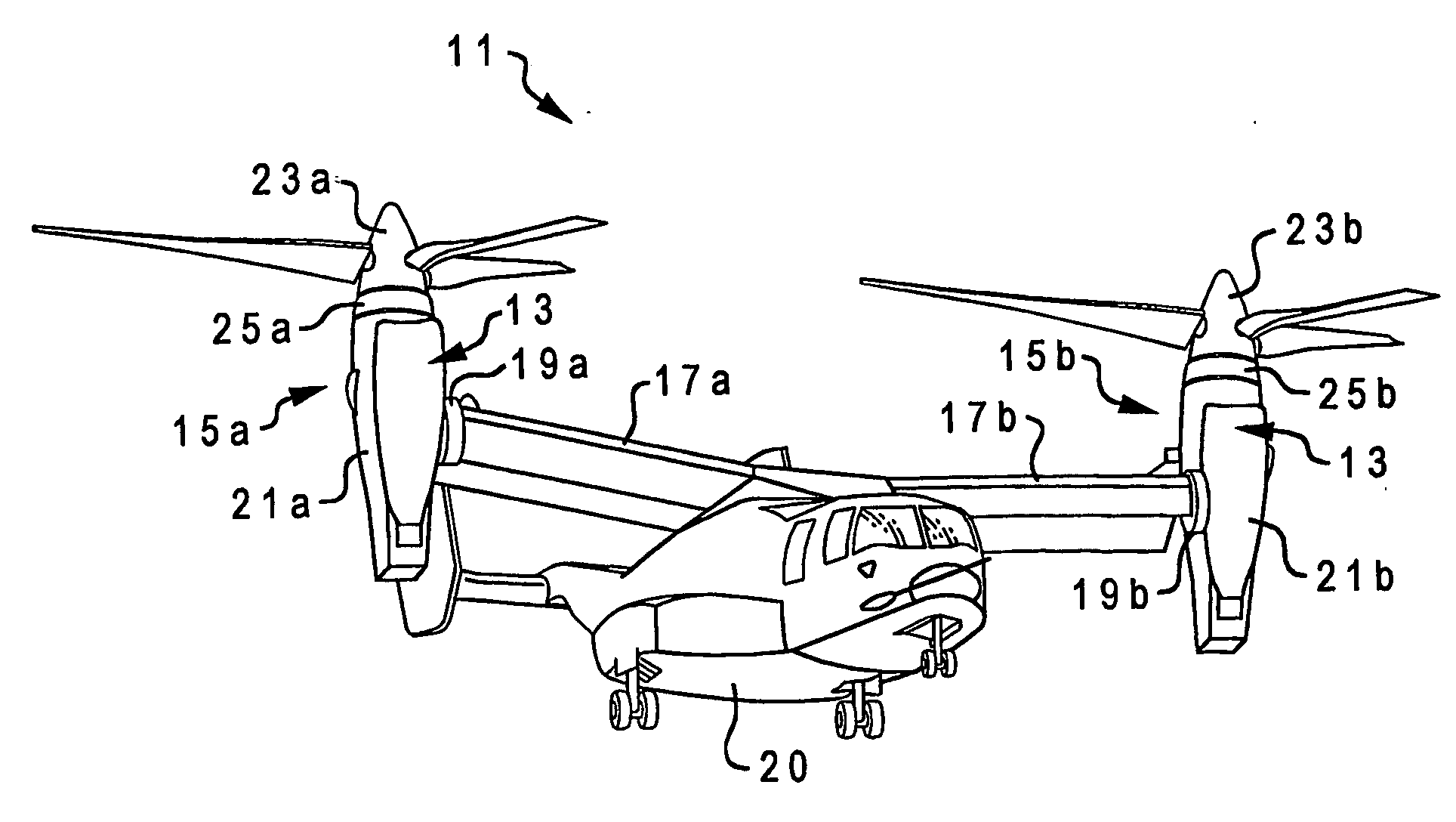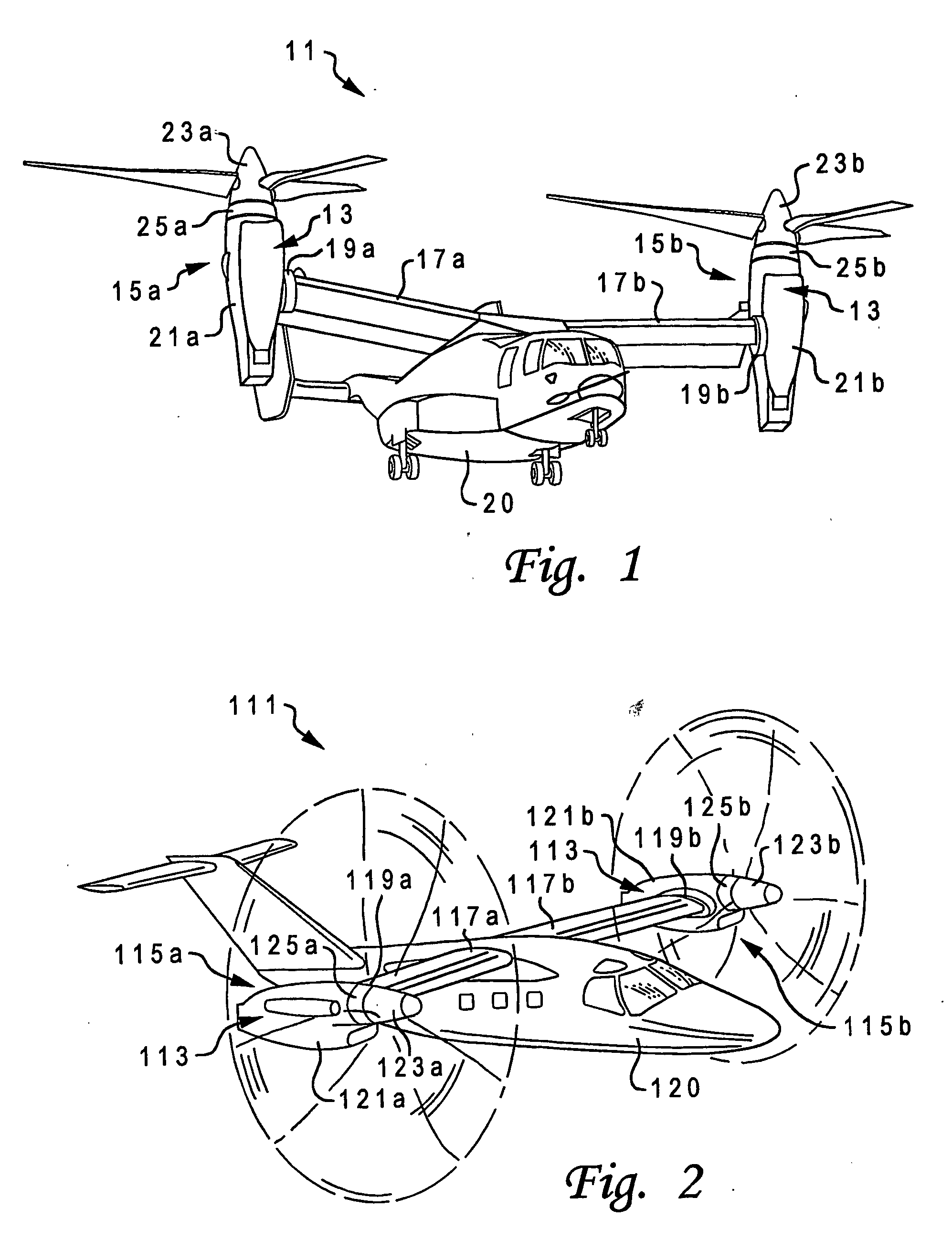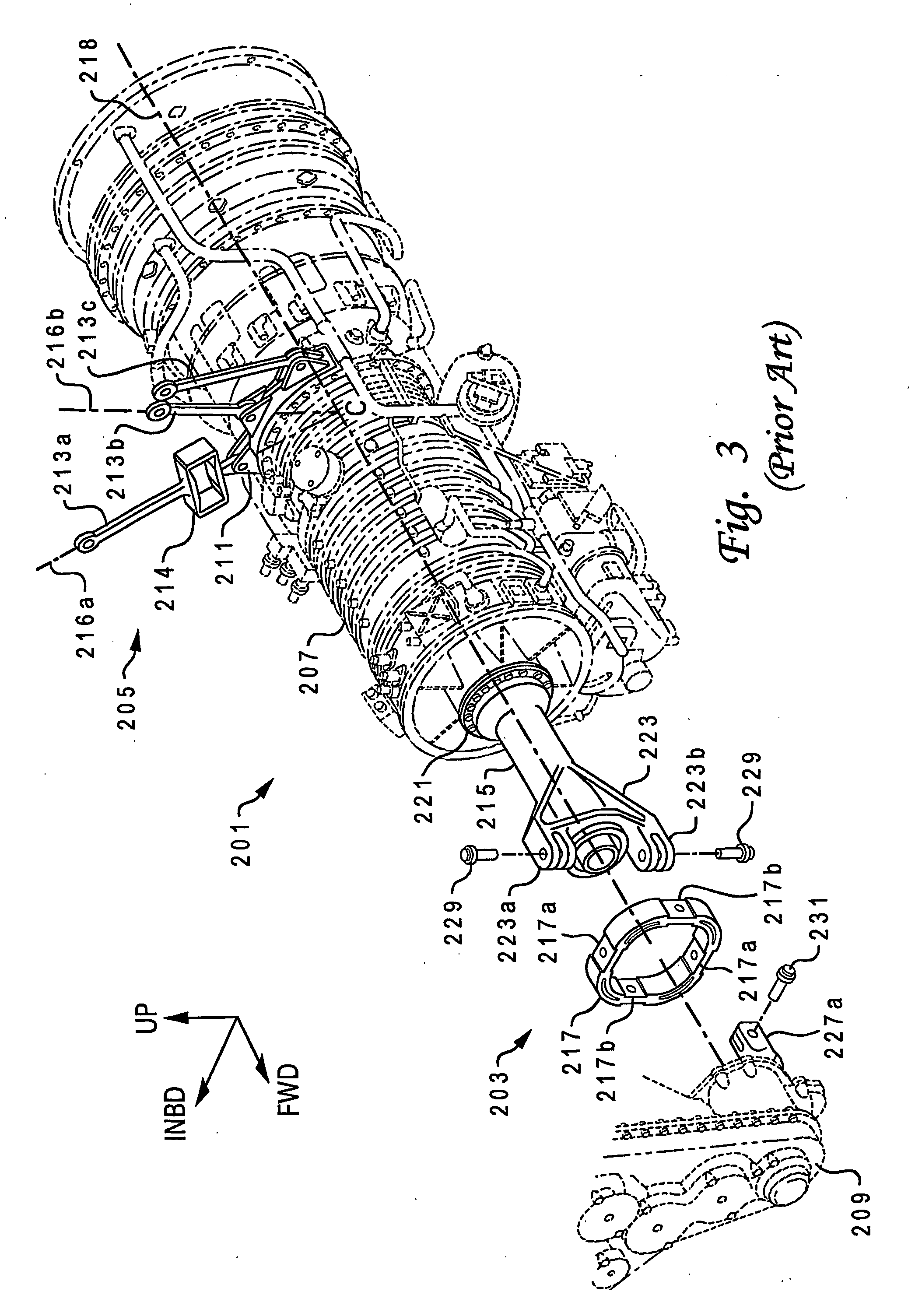Torsionally de-coupled engine mount system
a technology of engine mounts and torsional separation, which is applied in the direction of machines/engines, vertical landing/take-off aircraft, efficient propulsion technologies, etc., can solve the problems of not being able to meet the requirements of a military presenting many unique challenges, and not being able to meet the requirements of a civilian-type tilt rotor aircraft. , to achieve the effect of reducing the load of the engine mounts, less complicated, and reduced
- Summary
- Abstract
- Description
- Claims
- Application Information
AI Technical Summary
Benefits of technology
Problems solved by technology
Method used
Image
Examples
Embodiment Construction
[0031] Referring to FIG. 1 in the drawings, a military-type tilt rotor aircraft 11 having a torsionally de-coupled engine mount system 13 according to the present invention is illustrated. Tilt rotor assemblies 15a and 15b are carried by wing members 17a and 17b, and are disposed at end portions 19a and 19b of wing members 17a and 17b, respectively. Wing members 17a and 17b are coupled to a fuselage 20. Tilt rotor assemblies 15a and 15b include nacelles 21a and 21b, which house the engines, transmissions, and prop rotor gear boxes that drive rotors 23a and 23b disposed on forward ends 25a and 25b of nacelles 21a and 21b.
[0032] Tilt rotor assemblies 15a and 15b move or rotate relative to wing members 17a and 17b between a helicopter mode in which tilt rotor assemblies 15a and 15b are tilted upward, such that tilt rotor aircraft 11 can take off, hover, fly, and land like a conventional helicopter; and an airplane mode in which tilt rotor assemblies 15a and 15b are tilted forward, suc...
PUM
 Login to View More
Login to View More Abstract
Description
Claims
Application Information
 Login to View More
Login to View More - R&D
- Intellectual Property
- Life Sciences
- Materials
- Tech Scout
- Unparalleled Data Quality
- Higher Quality Content
- 60% Fewer Hallucinations
Browse by: Latest US Patents, China's latest patents, Technical Efficacy Thesaurus, Application Domain, Technology Topic, Popular Technical Reports.
© 2025 PatSnap. All rights reserved.Legal|Privacy policy|Modern Slavery Act Transparency Statement|Sitemap|About US| Contact US: help@patsnap.com



